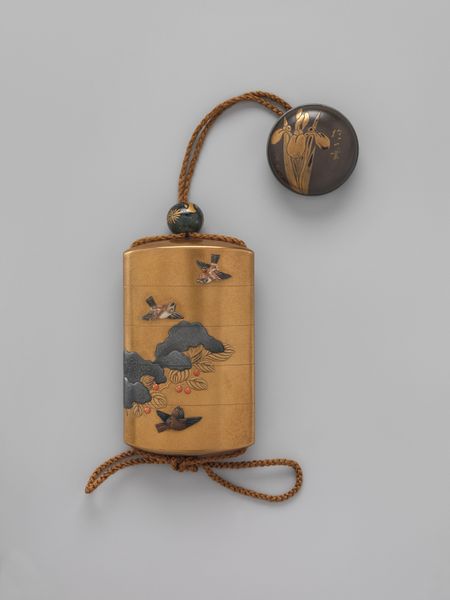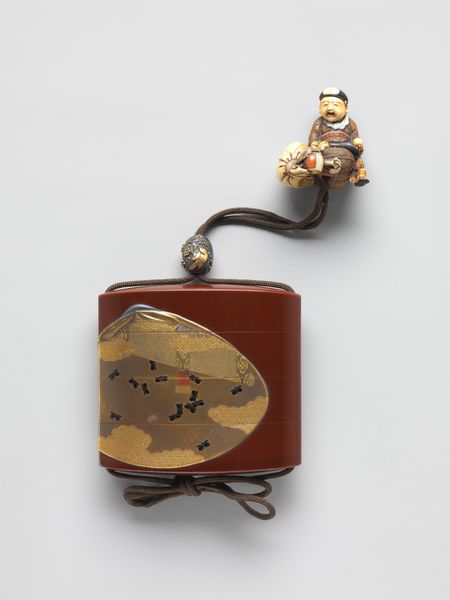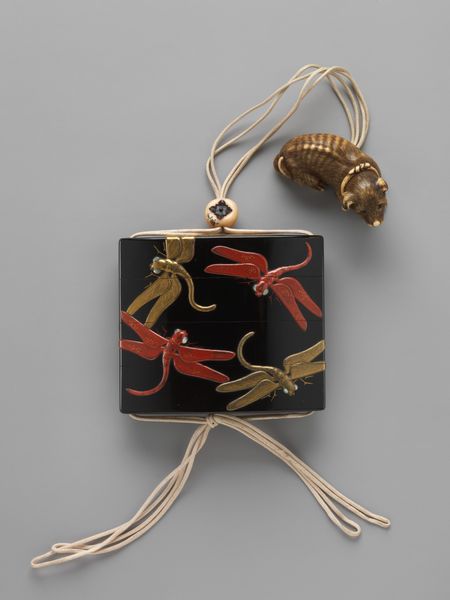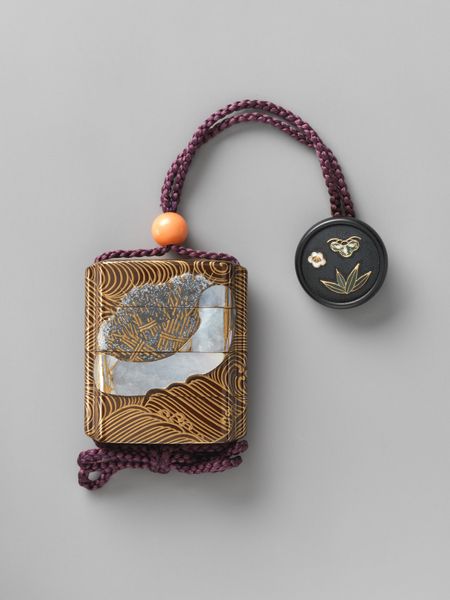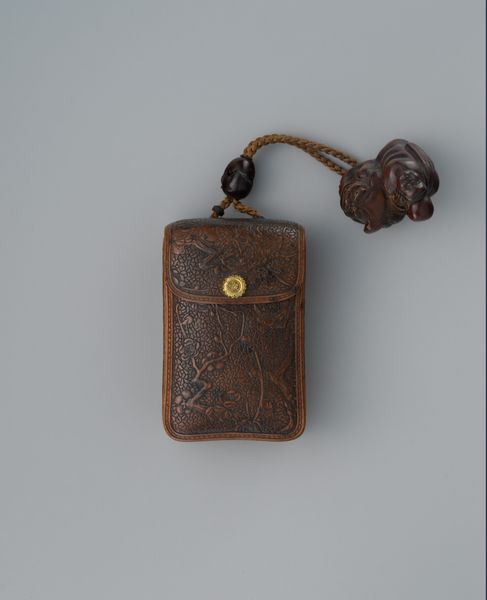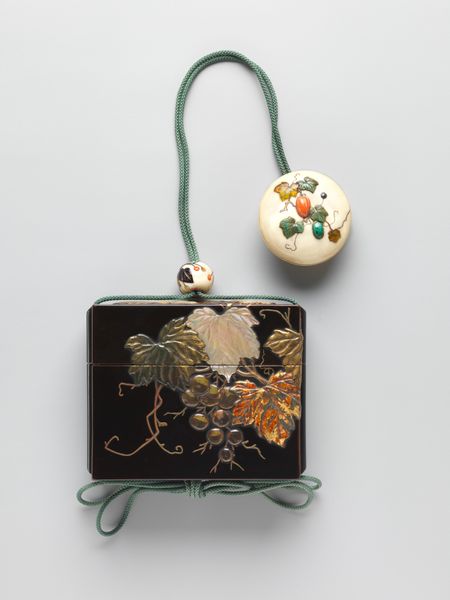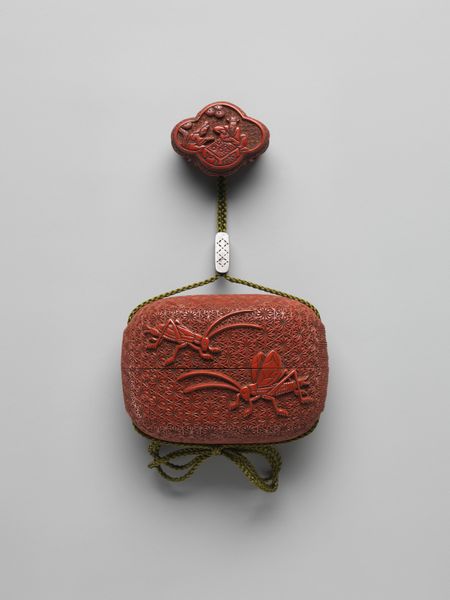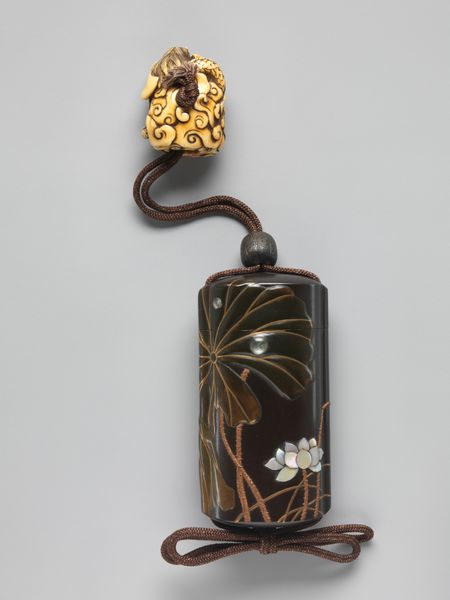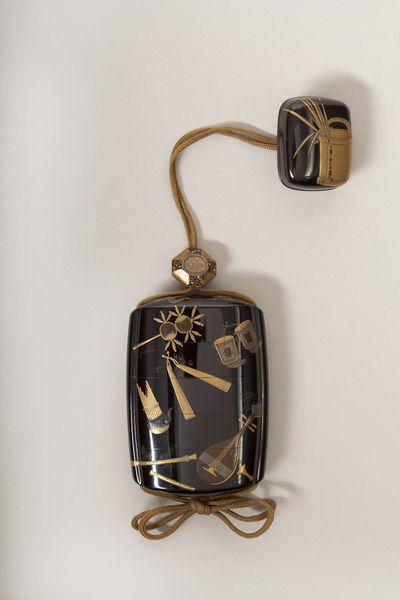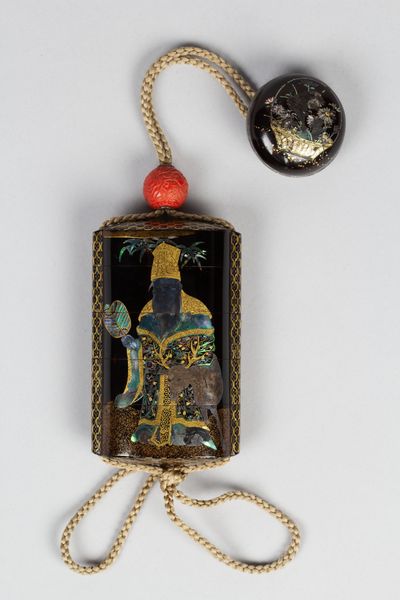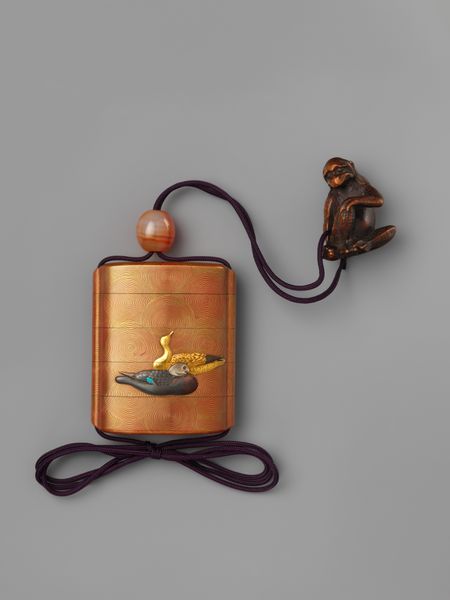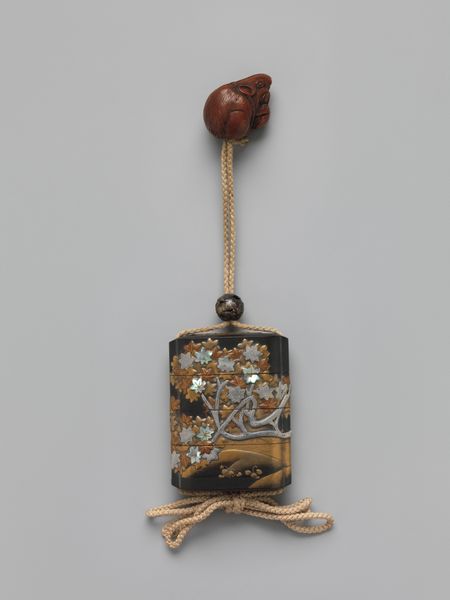
painting, gold, ivory
#
painting
#
asian-art
#
gold
#
landscape
#
japan
#
orientalism
#
ivory
#
miniature
Dimensions: H. 3 1/16 in. (7.7 cm); W. 2 3/16 in. ( 5.5 cm); D. 7/8 in. (2.3 cm)
Copyright: Public Domain
This is an Inrō with Cranes and Pines, crafted by Koma Kyūhaku V, likely in the late 18th century. The small, segmented case immediately strikes us with its refined elegance. Observe how the artist uses a high-relief technique to depict cranes amidst a stylized pine forest. The composition is dense, yet the dynamic arrangement of the birds creates a sense of movement across the surface. Kyūhaku's choice of black, silver and gold lacquer against the warm gold ground is masterful. This interplay creates depth and enhances the intricate details of the cranes' feathers and pine needles. Considered within a structuralist framework, the crane and pine motifs function as signs deeply rooted in Japanese cultural codes, symbolizing longevity and good fortune. The Inrō itself becomes a signifier, representing status and taste within Edo period society. Note how the artist balances formal beauty with symbolic meaning. This fusion transforms a functional object into a work of art, inviting contemplation on its aesthetic and cultural significance.
Comments
No comments
Be the first to comment and join the conversation on the ultimate creative platform.
